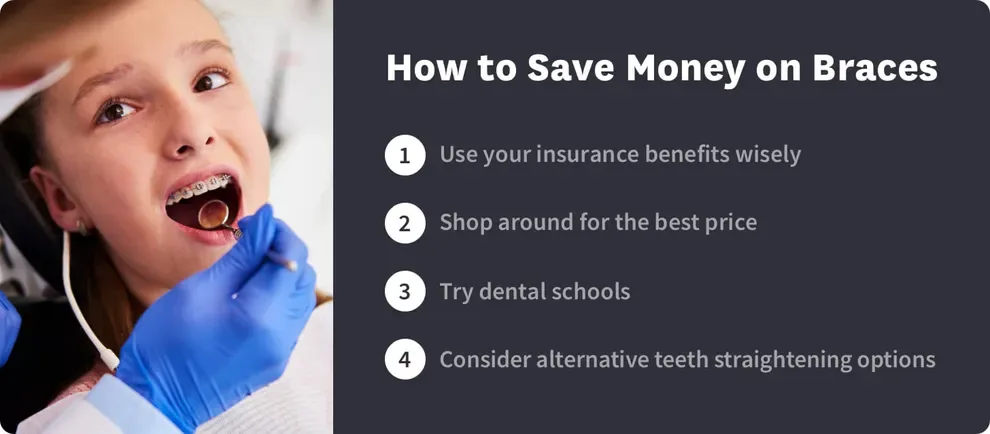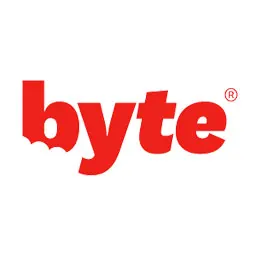Finding Cheap Braces: Options & Comparisons

Table of Contents
- Using Insurance Wisely
- Shopping Around
- Try Dental Schools
- Choosing the Right Options
- Cheaper Alternatives
- Affordable Aligners from Byte
Finding cheap braces can take time, legwork, and persistence. But the money you save could make all of your hard work worthwhile.
Save money on braces by doing the following:
Using your insurance benefits wisely
Shopping around for the best price
Booking an appointment with a dental school
Choosing the right tooth straightening option
Use Your Insurance Benefits Wisely
Each month, you pay a premium to protect your teeth. Put that plan to work to help cover the cost of your braces, but check the fine print carefully.
Most dental insurance plans use something called a network to keep prices low. The administrators sign contracts with orthodontists, and they agree on how much treatments will cost consumers and how much the plan will pay.
Insurance companies will tell you that you will pay more if you choose a provider that's outside of your network. You'll see those disclosures on documents like this one.
Pay close attention. If you choose a non-participating orthodontist, you may pay the entire cost of your treatment out of pocket. That's far from cheap.
Your dental plan may only cover part of the cost of care, even if you're working with a network professional. For example, a plan from Tufts covers just half of the cost of braces, and if your care costs more than $1,500, you must pay the balance.
Ensure that you understand how your plan works. Ask your orthodontist for help, if needed. Never assume your insurance will make your braces cheap.

Shop Around for the Best Price
Researchers discuss the average cost of braces. Those figures can be helpful as you plan, but know that the costs can vary greatly from provider to provider.
On average, traditional braces cost $3,000–$7,000. But someone with few customers and high overhead might charge you less just to get patients in the door. Similarly, a professional with many patients might charge you more since competition isn't a problem.
Before you settle on a provider, ask about the following:
Paying for braces with a credit card can lead to high fees and plenty of headaches. Paying a set amount with an orthodontist could save you money if that professional offers a low interest rate.
If you've saved up for braces, put that money to work. Some professionals will shave money off your final bill if you can tackle the total all at once with cash.
If you need dental care but have no way to pay for it, your dental professional may offer low-cost programs that can help.
Some orthodontists use programs like Groupon to entice new customers to join them. They're not legal or advised for dentists in all states, but they're widely available in others.
Don't be afraid to ask about your options before you sign on as a patient. Most orthodontists have practice managers who are happy to explain how payments work, and they can help ensure that you get the lowest price possible.
Everyone wants to save money, and it's possible to find cheap braces, but prepare to do a lot of legwork and research before selecting a company you can trust.
Try Dental Schools
Orthodontists spend years learning about their craft, and they need patients for practice sessions. Some dental schools open up clinics on campus, and savvy shoppers could get an excellent deal here.
Costs at a dental school can vary. For example, one school has a three-tiered program that includes the following:
In this very low-cost option, you'll get dental care from students while they're supervised by their teachers.
In this moderately priced option, you'll work with advanced students under the supervision of their teachers.
You'll pay prices comparable to private clinics as you work with teachers only.
Factor in travel time and expenses as you plot out your budget. If you live hours from the closest school, the money you save on braces may not exceed what you pay to get to your orthodontist.
But if you live close to a school, this could be an excellent way to save money while getting the smile you've always wanted.
Choosing the Right Braces
You may walk into an orthodontist's office believing that expensive braces are your only choice. But know that you have plenty of solutions available, and some can save you a great deal of money.
For example, metal braces attached to the front of your teeth and connected with metal wires are both traditional and cost-effective. As we mentioned, braces like this cost about $4,500 on average.
More expensive options include the following:
Tooth-colored brackets are harder to spot, but prepare to pay up to $8,500 for them.
Brackets and wires placed behind your teeth are even harder for outsiders to see, but they can cost you up to $13,000.
Cheaper Alternatives to Braces
For some, the cost and process involved with getting braces is simply too much, especially when your dental policy won’t cover all of the bill, or if you’re only looking to correct a minor orthodontic problem or issue with your bite.
Fortunately, today there are cheaper alternatives to braces available for many people who are looking to straighten their teeth or achieve an optimal smile. Here are some of them:
Retainers are dental devices, usually made of metal or plastic, that are custom-made to fit over an individual’s teeth and influence tooth movement.
Retainers are most commonly used to keep teeth in place after orthodontic treatment (like braces or aligners). But in some cases, a dentist may suggest wearing a retainer to address a minor orthodontic problem, like a single tooth that needs to shift to a new location for proper alignment.
There are two different types of retainers.
Fixed retainers are placed in your mouth by a dentist. The device is glued or bonded onto teeth and not removed until treatment is complete.
Removable retainers are devices that are easily taken out throughout treatment.
Retainers are much more affordable than braces, with a price range of about $100–$500. However, the treatment capabilities of retainers are limited, as they may only be able to help with minor overcrowding or shifting issues. Treatment can also take much longer when using only a retainer.
Some individuals may find the idea of getting a cosmetic procedure to fix their smile an appealing option. The process for this type of treatment is generally much less involved and faster than braces, and the result may be a near-perfect looking smile.
Veneers are among the most popular of cosmetic dental procedures that may help with the appearance of minor orthodontic problems. Veneers are thin coverings, usually made of porcelain or resin, that are cemented to the front of a tooth using a glue-like cementing process.
Veneers are carefully color-matched to an individual’s surrounding teeth. Because they cover an existing tooth, veneers can give a smile a whole new look or change the appearance of an orthodontic problem like crooked teeth or gaps.
Although dental veneers may sound like an easy fix for bite and smile problems, they do have a few serious disadvantages.
They may not be more affordable than braces. The cost of a single veneer is around $1,300, but more than one veneer may be needed to fix the appearance of an orthodontic problem. There also may be additional dentist fees for the procedure.
Veneers will not address any orthodontic problems. Bite and alignment issues will not be fixed with veneers and teeth may continue to shift.
Veneers will likely need to be replaced around every 10 years or so.
In order to get the veneers on, a dentist will have to permanently alter your tooth.
Veneers can result in having higher sensitivity while eating and drinking.
Veneers are unlikely to be covered by insurance.
Clear aligner sets move teeth through a progression of aligner trays that gently guide teeth into their ideal positions. With costs ranging from around $1,800 to $2,500, clear aligners are generally more affordable than braces.
These are other advantages of clear aligners over braces:
Convenience: While braces require many in-office visits to the orthodontist for fitting and adjustments, clear aligner sets are designed to make teeth straightening easier. After an initial consultation or at-home impression kit, clear aligner sets can be delivered right to your door.
Ease of use: Unlike braces, clear aligners are removable and can be taken out for eating, sports, and special events.
Not noticeable: Many are concerned about the appearance of braces. Because they’re clear, aligners are virtually invisible.
Fast: Most aligners move teeth into their desired position within six months. Some, like Byte, may require as little as four months.
While clear aligners are an effective at-home option for teeth straightening, there are some potential drawbacks as well, including these:
In order to work effectively, aligners must be worn as directed. While braces are cemented onto teeth, aligners are removable and must be worn continuously to work. This means you have to remain committed to your treatment plan.
Aligners can’t correct all orthodontic issues. Some severe orthodontic problems may need braces or surgery. Your initial consultation or at-home impression kit will determine if you are a candidate for aligners. Some providers, including Byte, will refund the cost of the impression kit if it’s discovered your dental problems can’t be fixed with aligners.
Affordable Clear Aligners from Byte
Byte makes effective, doctor-supervised smile treatments accessible, so you can do it at home.
Aligners from Byte are one of the least expensive options available, and we process dental insurance payments too. Find out more about who we are, and you'll see we're right for you.
